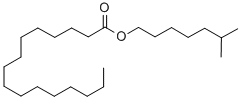Carnauba wax
Synonym(s):Brazil wax;Carnauba wax No. 1 yellow
- CAS NO.:8015-86-9
- Molecular Weight: 0
- MDL number: MFCD00130724
- EINECS: 232-399-4
- SAFETY DATA SHEET (SDS)
- Update Date: 2025-12-17 09:49:22
What is Carnauba wax?
Chemical properties
solid
Chemical properties
Carnauba wax occurs as a light brown- to pale yellow-colored powder, flakes, or irregular lumps of a hard, brittle wax. It has a characteristic bland odor and practically no taste. It is free from rancidity. Various types and grades are available commercially.
The Uses of Carnauba wax
Wherever a hard, high-polish wax is desired, e.g. in automobile waxes, floor wax emulsions, high quality shoe polishes, in the paper industry (especially for making carbon papers). As a plasticizer in dental impression compounds. To raise the melting point of other waxes; often used together with candelilla wax. The presence of the lower-melting ouricury wax is considered as an adulteration. Purified and bleached carnauba wax is used for cosmetic materials, such as depilatories and deodorant sticks. In pharmacy as the last stage in tablet coating. Skin sensitization or irritation by carnauba wax seems infrequent.
The Uses of Carnauba wax
carnauba wax is used to firm and texturize cosmetic preparations, and give them a less fluid consistency. Carnauba wax also forms a protective layer on the skin’s surface. It has the highest melting point among natural plant waxes and does not usually cause allergic reactions. This wax is obtained from leaves and leaf buds of the Brazilian wax palm.
The Uses of Carnauba wax
Carnauba Wax is a general purpose food additive that is a hard and brittle wax. it is obtained from the leaf buds and leaves of the brazilian wax palm copernicia cerifera. it is the hardest wax known and is used in candy glaze.
Production Methods
Carnauba wax is obtained from the leaf buds and leaves of the Brazilian carnauba palm, Copernicia cerifera. The leaves are dried and shredded, and the wax is then removed by the addition of hot water.
Definition
The wax derived from Copernicia cerifera, Prunae.
General Description
Odorless yellow to dark brown-green solid. Floats on water.
Air & Water Reactions
Insoluble in water.
Reactivity Profile
Carnauba wax react with acids to liberate heat. Heat is also generated by interaction with caustic solutions. Strong oxidizing acids may cause a vigorous reaction that is sufficiently exothermic to ignite the reaction products. Flammable hydrogen is generated by mixing with alkali metals and hydrides.
Health Hazard
Hot wax can burn skin and eyes.
Pharmaceutical Applications
Carnauba wax is widely used in cosmetics, certain foods, and
pharmaceutical formulations. Cosmetically, carnauba wax is
commonly used in lip balms.
Carnauba wax is the hardest and highest-melting of the waxes
commonly used in pharmaceutical formulations and is used
primarily as a 10% w/v aqueous emulsion to polish sugar-coated
tablets. Aqueous emulsions may be prepared by mixing carnauba
wax with an ethanolamine compound and oleic acid. The carnauba
wax coating produces tablets of good luster without rubbing.
Carnauba wax may also be used in powder form to polish sugarcoated
tablets.
Carnauba wax (10–50% w/w) is also used alone or with other
excipients such as hypromellose, hydroxypropyl cellulose, alginate/
pectin-gelatin, Eudragit, and stearyl alcohol to produce sustainedrelease
solid-dosage formulations.
Carnauba wax has been experimentally investigated for use in
producing microparticles in a novel hot air coating (HAC) process
developed as an alternative to conventional spray-congealing
techniques.(11) In addition, carnauba wax has been used to produce
gel beads for intragastric floating drug delivery and has been
investigated for use in nanoparticulate sunscreen formulations.
Safety
Carnauba wax is widely used in oral pharmaceutical formulations,
cosmetics, and certain food products. It is generally regarded as an
essentially nontoxic and nonirritant material. However, there
have been reports of allergic contact dermatitis from carnauba wax
in mascara.
The WHO has established an acceptable daily intake of up to 7
mg/kg body-weight for carnauba wax.
Storage
Carnauba wax is stable and should be stored in a well-closed container, in a cool, dry place.
Regulatory Status
GRAS listed. Accepted for use as a food additive in Europe. Included in the FDA Inactive Ingredients Database (oral capsules and tablets). Included in nonparenteral medicines licensed in the UK. Included in the Canadian List of Acceptable Non-medicinal Ingredients.
Properties of Carnauba wax
| Melting point: | 81-86 °C |
| Density | 0.990-0.999 |
| refractive index | 1.4500 |
| storage temp. | -20°C Freezer |
| solubility | Practically insoluble in water, soluble on heating in ethyl acetate and in xylene, practically insoluble in alcohol. |
| form | Powder or Flakes |
| color | Yellow |
| Specific Gravity | 0.990-0.999 |
| Odor | odorless |
| Water Solubility | Soluble in diethyl ether, alkali, chloroform. Slightly soluble in boiling ethanol. Insoluble in water. |
| Merck | 14,1846 |
| Dielectric constant | 2.9(Ambient) |
| Stability: | Stable. Incompatible with strong oxidizing agents. |
| CAS DataBase Reference | 8015-86-9 |
| EPA Substance Registry System | Carnauba wax (8015-86-9) |
Safety information for Carnauba wax
Computed Descriptors for Carnauba wax
Carnauba wax manufacturer
New Products
4,4-Difluoropiperidine hydrochloride tert-butyl 9-methoxy-3-azaspiro[5.5]undecane-3-carboxylate Indole Methyl Resin N-Isopropylurea N,N-Dicyclohexylcarbodiimide(DCC) MELDRUMS ACID 5-METHYLISOXAZOLE-4-CARBOXYLIC ACID Magnessium Bis glycinate Zinc ascorbate 1-bromo-2-butyne 2-acetamidophenol 9(10H)-anthracenone Erythrosin B, 4-Piperidinopiperidine 2-((4-morpholinophenylamino) (methylthio) methylene) malononitrile 2,4-dihydroxybenzaldehyde 3-(4-morpholinophenylamino)-5-amino-1H-pyrazole-4-carbonitrile Methyl 2-methylquinoline-6-carboxylate 2,6-dichloro-4-nitropyridine 4-Bromo-2-chlorobenzonitrile 2-(benzylamino)acetic acid hydrochloride 4-(tert-Butoxycarbonylamino)but- 2-ynoic acid 3,4-dihydro-2H-benzo[b][1,4]dioxepine 1-Phenyl-1-cycloprppanecarboxylicacidRelated products of tetrahydrofuran








You may like
-
 Carnauba wax CAS 8015-86-9View Details
Carnauba wax CAS 8015-86-9View Details
8015-86-9 -
 Carnauba wax CAS 8015-86-9View Details
Carnauba wax CAS 8015-86-9View Details
8015-86-9 -
 Carnauba wax CAS 8015-86-9View Details
Carnauba wax CAS 8015-86-9View Details
8015-86-9 -
 Carnuba wax CAS 8015-86-9View Details
Carnuba wax CAS 8015-86-9View Details
8015-86-9 -
 Carnauba wax No. 1 yellow CAS 8015-86-9View Details
Carnauba wax No. 1 yellow CAS 8015-86-9View Details
8015-86-9 -
 A.B Enterprises White Crystal Carnauba Wax (8015-86-9), Packaging Type: Packet, Packaging Size: 50 kgView Details
A.B Enterprises White Crystal Carnauba Wax (8015-86-9), Packaging Type: Packet, Packaging Size: 50 kgView Details
8015-86-9 -
 Carnauba Wax Cas 8015-86-9View Details
Carnauba Wax Cas 8015-86-9View Details
8015-86-9 -
 Carnauba WaxView Details
Carnauba WaxView Details
8015-86-9
